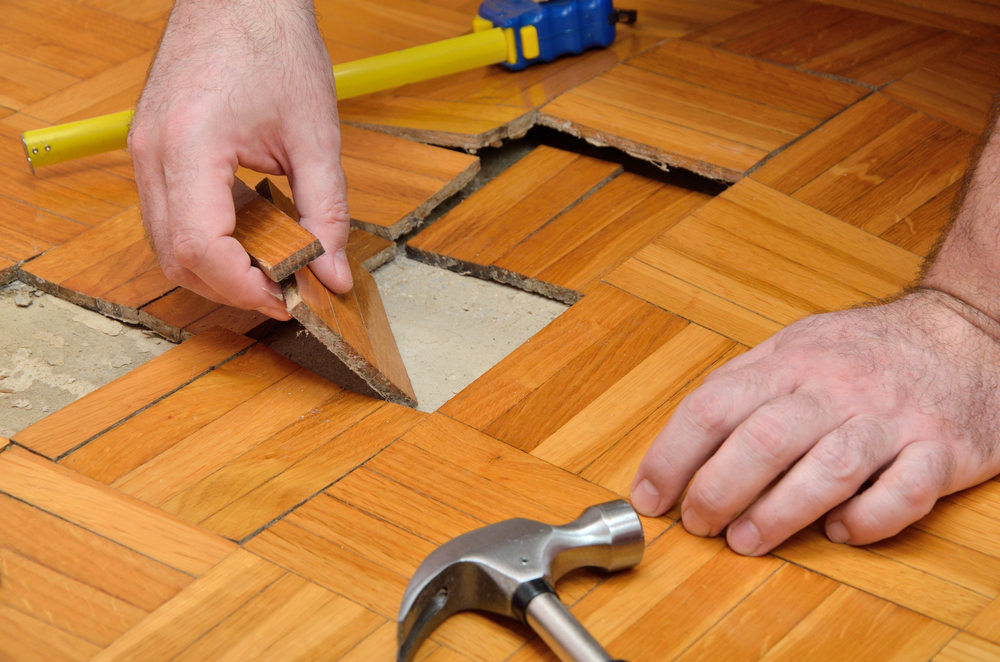
Differentiating the difference between property damage and normal wear and tear in your home can be crucial, especially for landlords during tenant move-outs or homeowners assessing their property’s value. While the distinction can sometimes be subtle, understanding the nuances can save money, time, and potential legal headaches.
Normal Wear and Tear
Normal wear and tear refer to the natural deterioration of a property that occurs under normal conditions.
Examples of Normal Wear and Tear:
- Fading Wall Paint or Wallpaper: Over time, colors can fade due to exposure to sunlight or regular living.
- Scuffed-up Floors: As long as it’s from regular use.
- Worn-out Carpets: Carpets naturally lose color and texture after years of walking on them.
- Loose Door Handles: These can occur naturally over time with regular use.
- Dusty Blinds and Curtains: Your blinds and curtains accumulate dust over time, even with regular cleaning.
- Worn-out Gaskets on Fridge Doors: Over time, they may need to be replaced due to regular use.
- Small, Non-Hazardous Cracks in Walls: Houses settle over time, which can cause minor cracks.
Property Damage
Property damage is harm that affects your property’s usability, value, or normal function due to misuse, accidents, or intentional harm.
Examples of Property Damage:
- Holes in the Walls: Whether from removing mounted TVs, accidents, or any other reason.
- Stains on Carpets or Walls: Especially large, notable stains resulting from spills or other accidents.
- Broken Tiles: Cracks or breaks from dropping heavy objects.
- Broken Windows: Cracks, holes, or complete breaks.
- Pet Damage: Pet damage includes scratched-up floors, urine-stained carpets, or chewed corners.
- Water Damage: Whether from neglecting a leak, overflowing bathtubs, or other water-related incidents.
- Burns or Heat Marks: These result from setting hot pots on countertops without protection or cigarette burns.
- Damaged Appliances: If they’re mishandled or used improperly.
How to Tell the Difference
- Age and Lifespan: Consider the age of the item and its typical lifespan. Carpets, for instance, have a life expectancy. If the carpet is old, it’s more likely to be wear and tear. If it’s relatively new but damaged, it’s likely due to misuse.
- Normal Use vs. Negligence: Wear and tear result from normal use. Damage often arises from accidents, negligence, or misuse.
- Size and Visibility: Small marks on walls or tiny carpet stains might be considered wear and tear. However, larger, more noticeable damage often falls under property damage.
- Function vs. Aesthetics: If something affects the functionality of an item, it’s often considered damage. For example, a non-working door handle is damaged, but a slightly loose one might be wear and tear.
Law Offices of Julia Sklar: Trusted Property Damage Law Firm
Distinguishing between property damage and normal wear and tear requires a discerning eye and an understanding of the natural aging process of a home’s components. This distinction is crucial, especially for homeowners trying to discern if they need assistance from a lawyer if they feel their property has been damaged. At the Law Offices of Julia Sklar, we specialize in providing comprehensive property damage services, ensuring that individuals affected by floods, fires, and natural disasters receive the compensation they deserve. Contact us today for a FREE consultation by calling (818) 904-1597 or clicking here.




